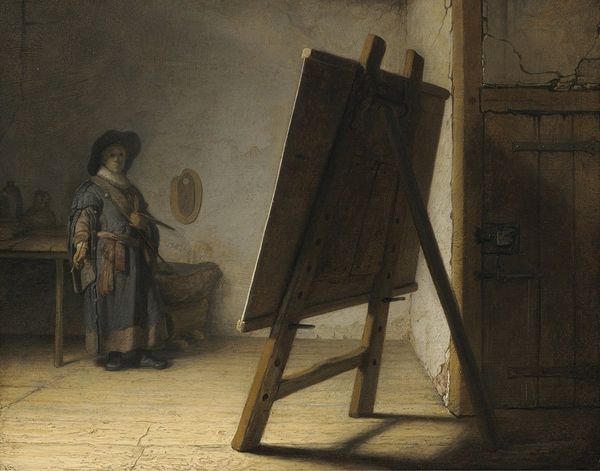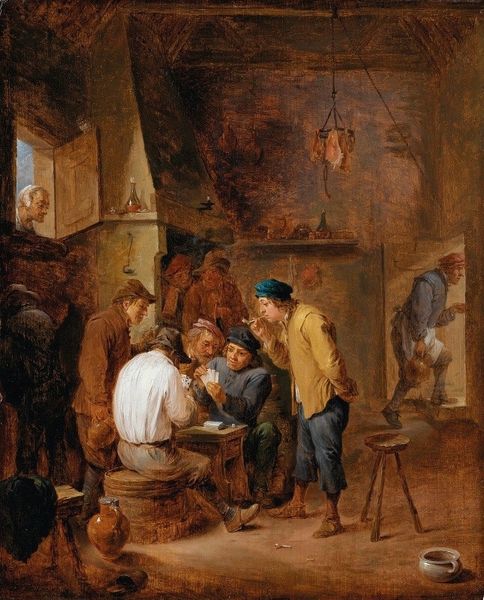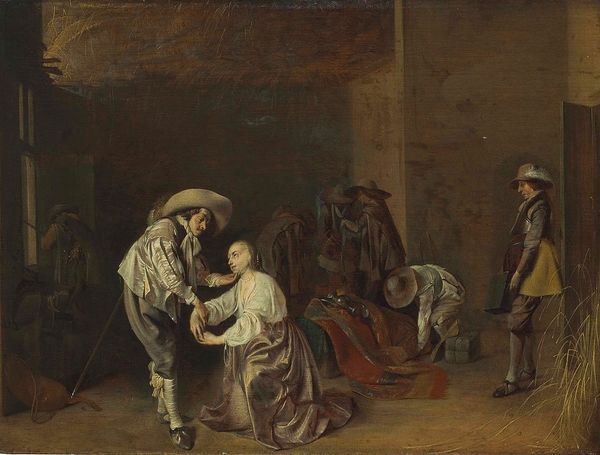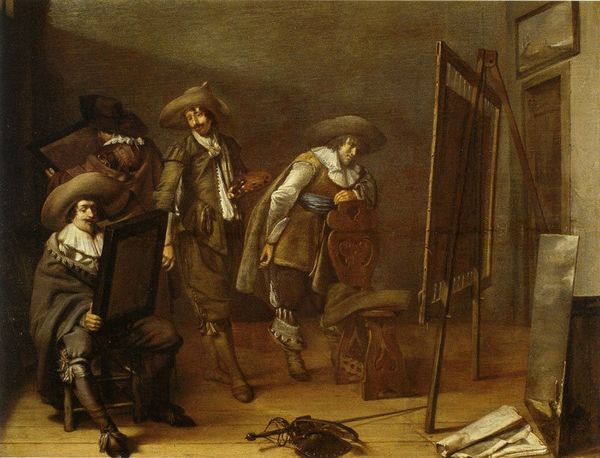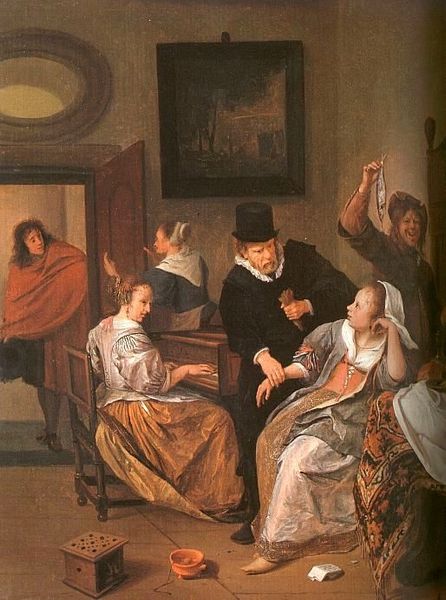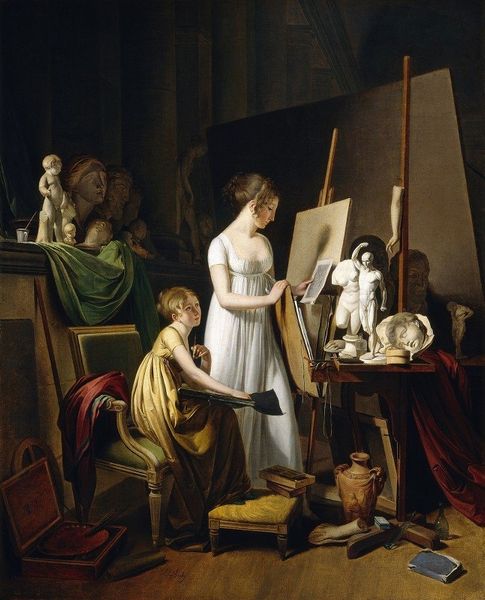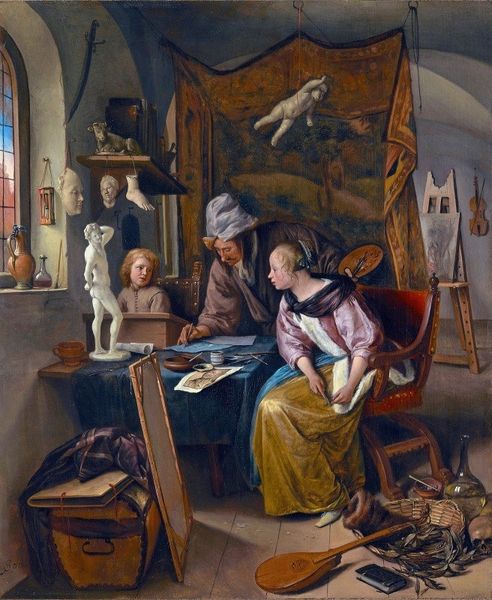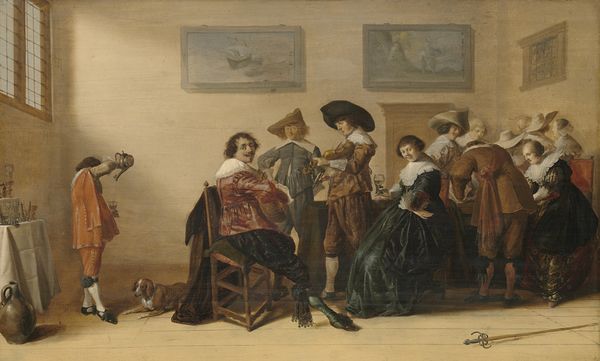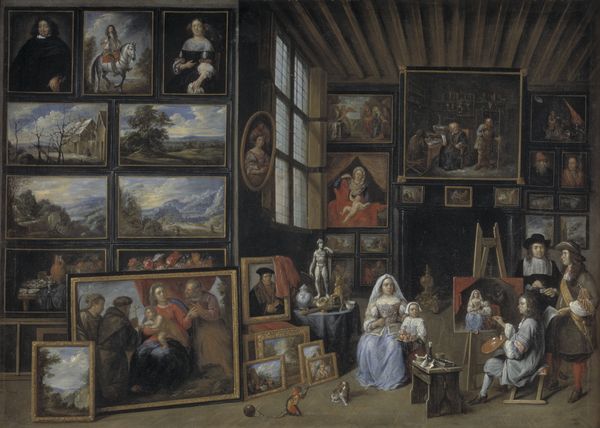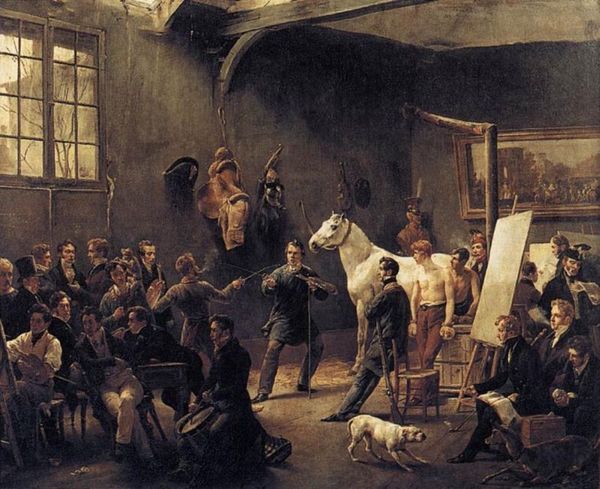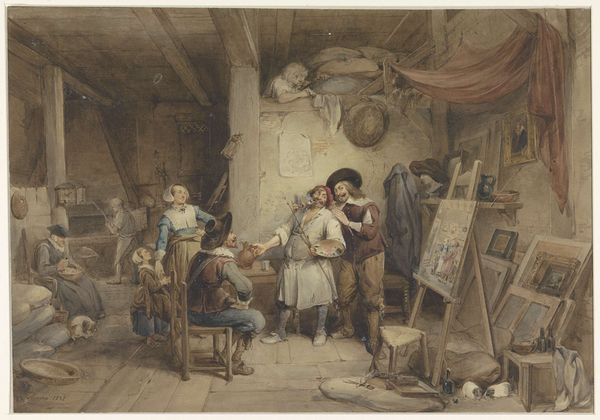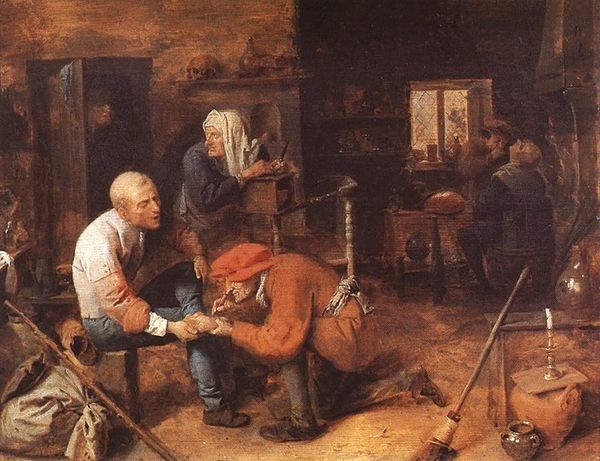
painting, oil-paint
#
portrait
#
baroque
#
dutch-golden-age
#
painting
#
oil-paint
#
sculpture
#
charcoal drawing
#
figuration
#
oil painting
#
genre-painting
Copyright: Public domain
Editor: This is Jan Miense Molenaer’s “The Artist’s Studio,” painted in 1631 using oil paint. The scene is lively, chaotic even. It's filled with figures and objects that create a snapshot into this creative space. What are your thoughts on how Molenaer portrays artistic life? Curator: I see it as more than just a glimpse into a studio. Consider the power dynamics embedded within the scene. Who has the privilege to create? Who are the muses and who are the overlooked figures toiling in the background? Think about the absence of female artists at the time. This piece, intentionally or not, perpetuates a certain narrative of artistic production dominated by men. Does the dog playing at the forefront have any significance beyond charming the viewer, perhaps obscuring or distracting us from a truth? Editor: I never thought about it that way, focusing on who is absent from the canvas. It’s easy to get lost in the details of the painting, such as the texture and colors. I was thinking more about what seems to be shown instead of not. What about all of the possible props available to him as the artist in his space? What were Dutch Golden age artists communicating through those objects? Curator: Precisely! Those objects become cultural signifiers, reinforcing societal norms. The lute, for instance, can represent harmony, but also alludes to worldly pleasures. The masks evoke ideas of theatricality and perhaps the unreliability of appearances in identity itself. Everything invites deeper interrogation. Editor: So it's not enough to appreciate the surface beauty or technical skill. We need to constantly question the underlying narratives and the historical context from which they emerge. It shows how paintings reflect what it meant to be someone at the time. Curator: Exactly. Art is not created in a vacuum. And this understanding allows us to engage more critically and responsibly with the past and, in turn, with our present.
Comments
No comments
Be the first to comment and join the conversation on the ultimate creative platform.

